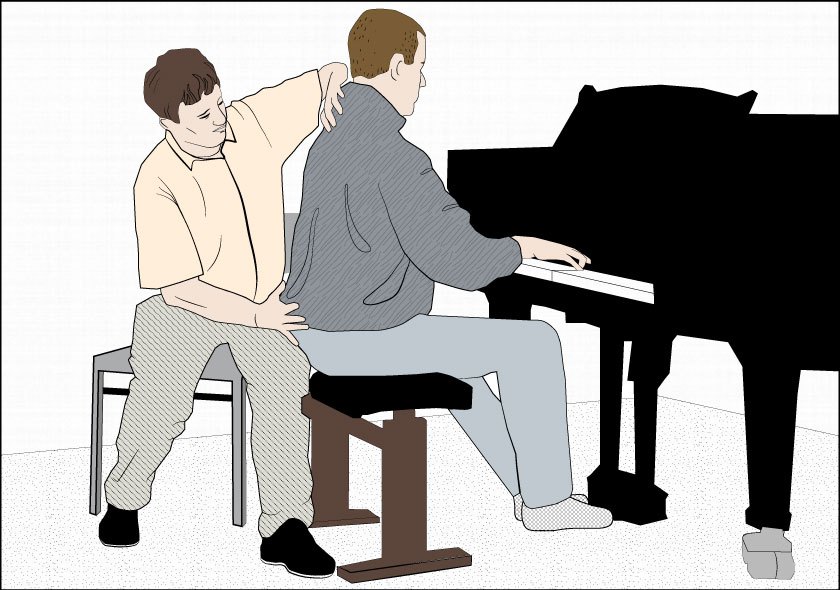The Alexander Technique: Musician’s Method for Improvement
A video by Lori Schiff – www.lorischiff.com
La Technique Alexander et les musiciens
Performers and musicians of all types from Yehudi Menuhin to Sting have found the Alexander Technique a valuable tool.
The Alexander Technique is a method for unlearning bad habits and misconceptions, a recipe for non-doing, rather than doing more of the same or adding to already existing unnecessary tensions to a performance.
First an Alexander Teacher helps the musician deal with her or his use in any activity, how he or she moves in general, and then see how a better awareness and coordination can be applied to overcome problems related to the requirements when playing specific instruments for a given person.

Between the thought of doing something and the transformation of the thought into an action there is a very small time gap. This gap can maybe best understood under the starters orders of – on your mark, get set, go. The Alexander Technique starts by observing the gap, the « get set », because the quality of our set pattern strongly influences the go, or to put it another way our response to stimuli, and also it affects the result of what we do.
For example if we have the intention to sit down on a chair and our set pattern is free from obstacles which prevent us from doing so in the most efficient and stress free manner, if someone takes away the chair which we thought was there, we will just keep going until we achieve the result of sitting on the floor, and from the outside this will appear so easy to do that any observer must think that to sit on the floor had been our intention all along.
Alexander teachers give their students information about the « get set » directly through the kinesthetic sense by the use of their hands.
The Alexander Technique allows them to see the harmful patterns contained in their habitual « get set », and the use of a teachers hands subsequently guides them through a new experience of less interference with performance and with a more successful outcome and with much less effort than they have previously known.
The unique use of the hands only to be found in this technique is much more helpful than words for developing new more effective set patterns. For example if someone says to the student, « careful there is no chair » this is likely to lead to a tensing of the muscles while the student thinks of the uncomfortable landing they might have had. If someone says straighten your back, bend your knees, keep your head free and poised on top of the spine, direct your movement with your eyes and don’t look for the chair, don’t suck in air allow the breath to be natural, expand the right rib cage when you breath, it is likely to lead to a much more anxious « get set » pattern and aggravate habits of tension and inappropriate use rather than improve them. Worst of all, even though aggravated and exaggerated by all the instructions, the student will still be unconscious about the nature of his harmful set pattern, so much he has had to concentrate on what he has to remember to do and not to do.
If an Alexander Teacher had eight arms he might be able to allow all this to happen in one go, but having been blessed with only two like the rest of us, it may take a series of lessons to develop a new set for sitting down, but when one thinks of the number of times one does it in a day and how inappropriate tensions in this simple act can affect performance there is much to unlearn in order to find ones inner balance and free oneself from harmful habits even before one starts to sing or takes up ones musical instrument.
To feel nervous before a performance may be considered « normal » but surely we would feel happier, more confident, more relaxed, perform better and feel less drained of energy after the performance if a way could be found not to feel nervous but to feel in control of the moment and not to have a set pattern which invades our lives for several hours or maybe even days or weeks before we have to perform in front of the examiner or the audience. Here too the Alexander Technique can help free us from our habitual feelings, not by addressing them directly but by allowing them to fall away like so much unnecessary baggage once our « get set » means exactly what it is, and nothing else which we have added to our « get set » without realizing it and which has so much influence upon our performance.
Podcast: benefits of the Alexander Technique for pianists and any musicians in general
Robert Rickover interviews a pianist about the benefits of the Alexander Technique for pianists and any musicians in general.
A podcast from Bodylearning.com


